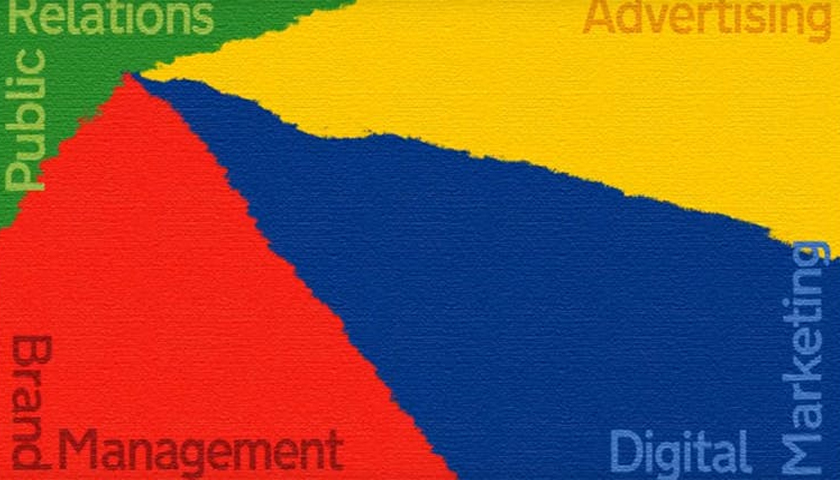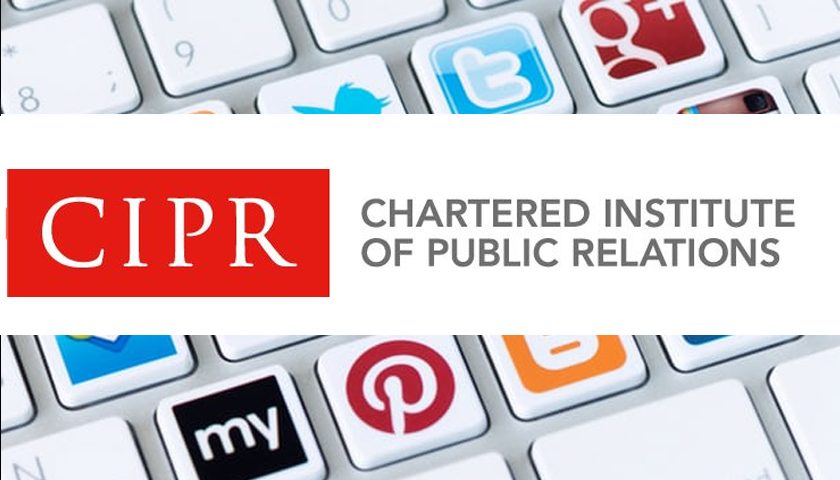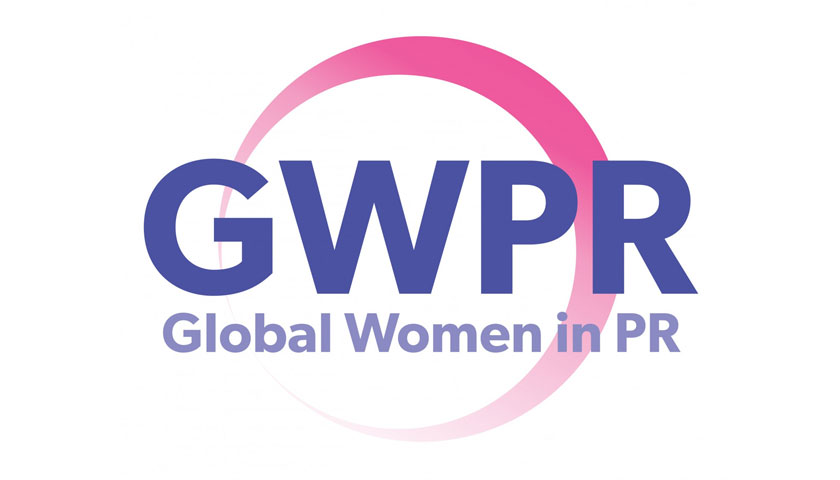Can you pour cold water on profound new thinking that could transform PR, Comms, and Advertising?
A new grassroots campaign, the ‘Dublin Conversation’, is planning what could be the biggest-ever shake-up in new thinking and doing, to enable public relations and advertising to be fitter for purpose, seize new opportunities, and address wider issues of growing distrust, division, and ‘fake news.
The Dublin Conversation is running an intellectual version of the ‘Ice Bucket Challenge’, inviting anyone around the world with an interest in the future of communications to pour cold water on the proposed ‘Dublin Definitions’. These provide new definitions for advertising, public relations, brand and what is commonly called ‘Comms’, with supporting theory based on science along with supporting strategies and tools.
Spanning practitioners and academics, the Dublin Conversation is planning over 100 conversations over the next 100 days, which anyone can join in, to road test the proposed ‘Dublin Definitions’.
By encouraging people to challenge the ideas will make the resulting thinking more robust, inclusive and smarter to transform future communications practice.
The draft ‘Dublin Definitions’ aims to provide greater purpose, self-belief, and confidence for public relations practitioners to enable them to seize more opportunities, either in PR-led integrated communications or in specialist roles.
By making greater use of what the draft Dublin Definitions proposes is public relations’ prime quality – that of earning trust for effective communications or behaviour change – enables public relations roles, such as reputation management or employee engagement, to be more potent and resilient.
The draft ‘Dublin Definitions’ create for the first time a formal definition of ‘Comms’ which goes beyond existing definitions of ‘integrated marketing communications’.
The independent, non-commercial grass-roots driven initiative kicked off its 100 days of conversations on Tuesday, May 22nd at Dublin Institute of Technology, Ireland. It intends to share resulting insights and lessons at major global communications conferences in the autumn.
Anyone interested in joining in the conversation, running an event, having a chat, or obtaining a copy of the draft Dublin Definitions White Paper or pamphlet can visit a number of forums supporting the idea including www.prplace.com.
The White Paper features a series of easy-to-follow steps, designed to spark reflection, discussion, and debate and map anyone’s new thinking in their ‘journey to Dublin’.
The ‘Dublin Conversation is intentionally grass-roots driven using what is known as ‘Humble Inquiry’. This respects the views of others, and encourages bottom-up ideas to emerge. By growing a tribe of new thinkers to establish new norms for their wider communities, avoids the problem of new ideas being perceived to be owned by a particular organization or individual.
The Dublin Definitions are the product of extensive academic research and real-word practice among leading thinkers and do-ers in the communications industries. They harness the revolutions in digital technology, neuroscience, and psychology, coupled with emergence theory, to define a new era of ‘Comms’.
It answers a 120 year plus failure to establish accepted definition of ‘public relation’, while also grounding future advertising and public relations practice within a wider Comms context. Until now, ‘Comms’ has not been formally defined nor recognised.
“Communications practice urgently needs new thinking to transform its responses to an increasingly polarised, mistrustful society. What was once an academic debate about how communications works, or what is advertising or PR, are now critical issues to address either for professional communicators seeking new direction, or for our society in declining levels of trust.“ said Andy Green, one of the supporters of the Dublin Conversation.
“The Dublin Definitions and Toolkit offers new answers. We need as many critical voices to engage through the Dublin Conversation to make any resulting thinking, theory and tools become as robust, powerful and relevant as possible. Please join the conversation.”
Background to understanding the draft Dublin Definitions
The draft ‘Dublin Definitions’ reveal how the 21st century revolutions in digital technology, neuroscience and psychology enable us to see our world from completely new vantage points.
In the same way Copernicus and Galileo revolutionised understanding of our universe by looking from a different perspective, the draft Dublin Definitions use new standpoints to overcome the blinkers of earlier study, enabling us to dig deeper, to discover a core touchstone for a richer and more profound understanding of what is ‘advertising’, ‘public relations’ and now ‘Comms’.
The cornerstones for defining a new era of ‘Comms’ with its new definitions for advertising and public relations are:
- the insights of Nobel-prize-winning psychologist Daniel Kahneman
- evolving the post social media communications model, commonly known by its acronym PESO, of communications using paid-for, earned, shared and owned media channels
- recognising what is known as emergence theory, where from the interaction of simple ideas emerges a reality.
Kahneman identified simple rules directing how we gain familiarity for any social interaction by being known, liked, trusted, front of mind, or being talked about.
The draft Dublin Definitions advocates evolving and extending the current definition of ‘Owned’ within PESO to include more than just own media channels. ‘Own’ should now incorporate own behaviours and attitudes to make this dimension more comprehensive and inclusive. By doing so, enriches the potential for greater public relations activity.
Using the bottom-up approach of emergence theory, harnessing both Kahneman’s simple rules and an evolved PESO model creates the canvas for the world of ‘Comms’. Here advertising and public relations are not at the centre of their respective universes but are part of a bigger Comms landscape within which they interact to create communications.
Advertising and public relations do not possess an exclusive quality but are defined by their focus, emphasis and range in how they use Kahneman’s simple rules: advertising was born out of the need to get known and noticed while public relations was born out the need to earn trust. Any communication is shaped by an interaction between advertising and public relations. They act in polarity with each other in the world of ‘Comms’.
Advertising can be characterised by using the PESO model, with an emphasis on using paid-for media while public relations tends to operate in reverse, using an OSEP model, where own behaviours and attitudes are the starting point for activity.
Earned trust is identified as the pivotal driver for public relations, with the need to earn trust shaping public relations practice through listening, advising on brand or corporate character, building social capital, and managing the brand’s or corporate entity’s narrative, story, news, or content.
Using earned trust at the heart of a new era of public relations does not contradict existing established definitions of public relations but reveals a deeper truth within them: earned trust is at the heart of reputation, relationships, influence, or mutual understanding.
The draft ‘Dublin Definitions’ create for the first time a formal definition of ‘Comms’ which goes beyond existing definitions of ‘integrated marketing communications’ by including advising on own behaviours and attitudes outside of the marketing remit.
Previous efforts to define ‘advertising’ or ‘public relations’ examined the question in isolation, looking for exclusive qualities, rather like the early astronomers seeking to explain how our universe worked with the Earth at its centre. Instead, by using the revolutions in digital technology, neuroscience and psychology the draft ‘Dublin Definitions’ enable us to see our world from completely new vantage points.
The different disciplines are not defined by any exclusive qualities – all communications for example, use trust – but are characterised by their focus, emphasis and range. Advertising tends to use a PESO approach, while public relations tends to use an OSEP one. The draft Dublin Definitions provide a coherent framework to manage these interactions, along with new tools to bridge theory and doing, and to encourage a more metrics-driven practice.
The ‘draft Dublin Definitions of ‘Comms’
‘Comms’ is more than an abbreviation of ‘Communications’. ‘Comms’ works to achieve change goals in social interactions including communications, marketing, behaviours or attitudes, by managing how we are known, liked, trusted, front-of-mind and being talked about.
‘Comms’ features the communication disciplines of advertising, brand management, digital and off-line marketing, and public relations that operate across Earned, Paid-for, and Shared media channels and Own behaviours, attitudes and media.
The ‘draft Dublin Definitions of Advertising’ (using a PESO model)
Advertising is born out of the need to get known and noticed for any social interaction in order to pro-actively persuade, engage, build emotional responses, participate, facilitate or create conversations. Effective advertising generates better awareness, emotional engagement or calls to action.
Advertising operates in a ‘Comms’ environment, working alongside public relations and other communication disciplines to achieve familiarity by making you more known, liked, trusted, front-of-mind, or being talked about through Paid-for, Earned, Shared or Own channels.
The ‘draft Dublin Definitions of Public Relations’ (using an OSEP model)
Public relations is born out of the need to earn trust for any social interaction. Effective Public Relations creates better influence, relationships, reputation, social capital and word-of-mouth conversations.
Public Relations operates in a ‘Comms’ environment, working alongside advertising and other communication disciplines to achieve familiarity by making you more known, liked, trusted, front-of-mind, or being talked about through using Own, Shared, Earned, or Paid-for channels.
The ‘draft Dublin Definitions of Brand’
A ‘brand’ is defined as a conceptual space containing all the perceptions, drawn from its facts, feelings or even falsehoods, that exist about a character (a person, group, or organization), constituency (a place or market sector), or campaign (a promotional activity). This brand space provides a convenient box for individuals to select, organize, and interpret the input from their senses to give meaning and order to the world around them. A brand is more than a marketing tool. It provides a conceptual vehicle for anyone operating in a Comms environment to contain the perceptions about any sender of a message, its receiver, the message itself, or its context.



